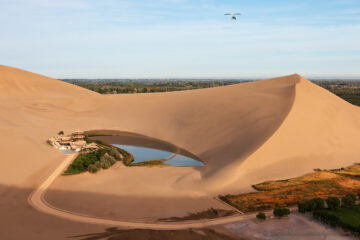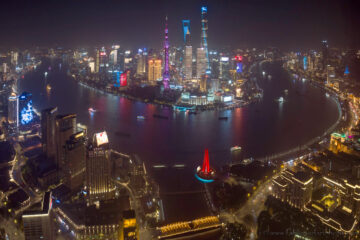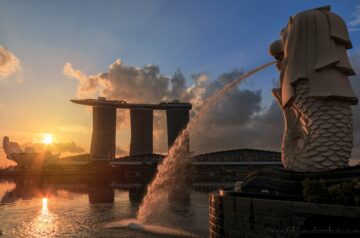Are you planning a two or three-day trip to Luang Prabang? In this travel guide, you can find ideas about what you can do and see in this beautiful city in Laos.
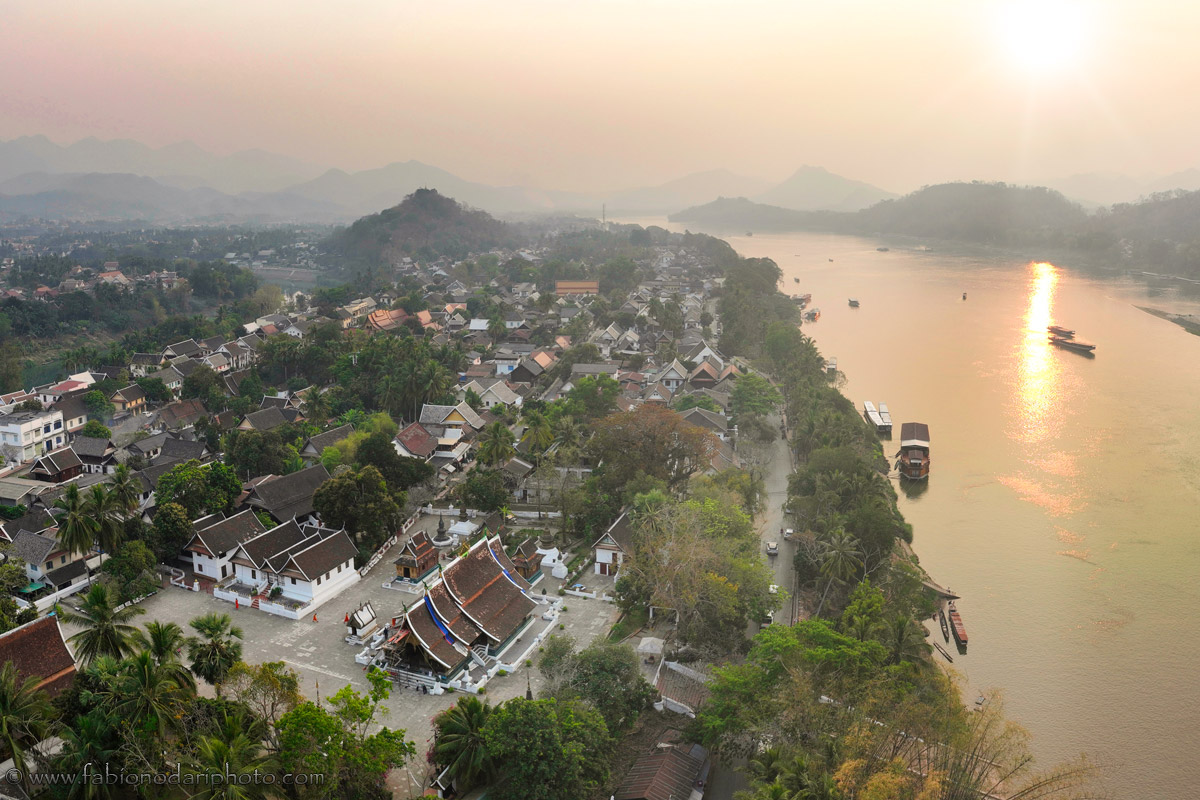
Once the royal capital of Laos, Luang Prabang has a rich history reflected in its architecture and cultural traditions. The city’s many temples are some of the most impressive in Southeast Asia, with intricate carvings, gold-leafed Buddha statues, and serene gardens.
The city is the perfect destination for both backpackers and families. Backpackers will love the affordable accommodation options and the delicious street food, and there are plenty of cultural sites and natural attractions to explore by foot or bike.
Families will feel safe and welcome here and in all of Laos. There are many different activities for everyone, like visiting temples and museums, taking a boat trip down the Mekong River, or exploring an Elephant rescue center.
With the construction of the new railway connecting Kunming to Vientiane, it is now even easier to get to Luang Prabang and maybe continue your trip to or from Yunnan (here is my guide).
When is the best time to visit Luang Prabang?
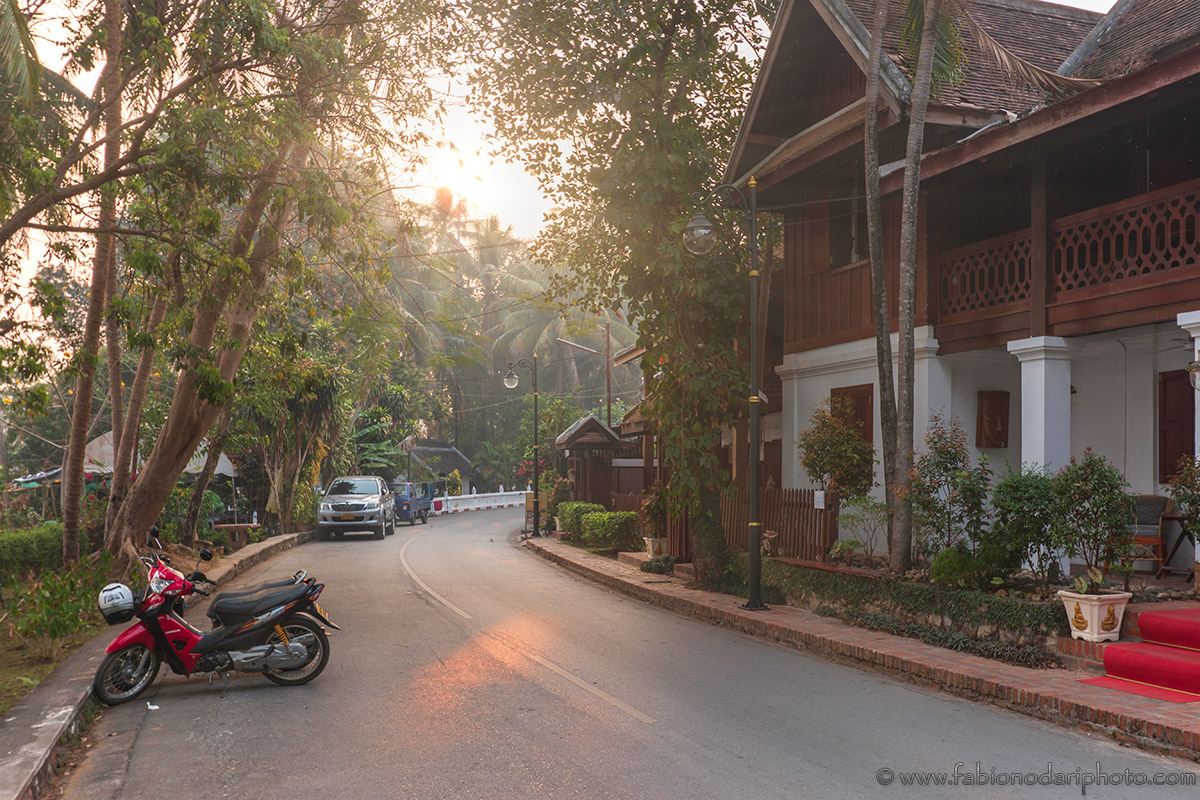
Luang Prabang has something to offer all year round, but the best time to visit is from November to March, during the dry season. The weather is nice and dry, which is perfect for activities such as hiking, cycling, and river cruises. Remember that this is peak tourist season so prices may be high, and there will be more tourists. The sky in March can be hazy due to the farmers burning their fields.
If you want to save money and avoid crowds, consider visiting between April and June or September to October. The weather is still warm and sunny, but you’ll have a better chance of finding lower prices, fewer people, and some rain.
During the rainy season, the rainforest and waterfalls come to life, and there are fewer tourists, making it easier to find accommodations and activities. Still, some tours may be limited due to weather conditions.
How to get to Luang Prabang
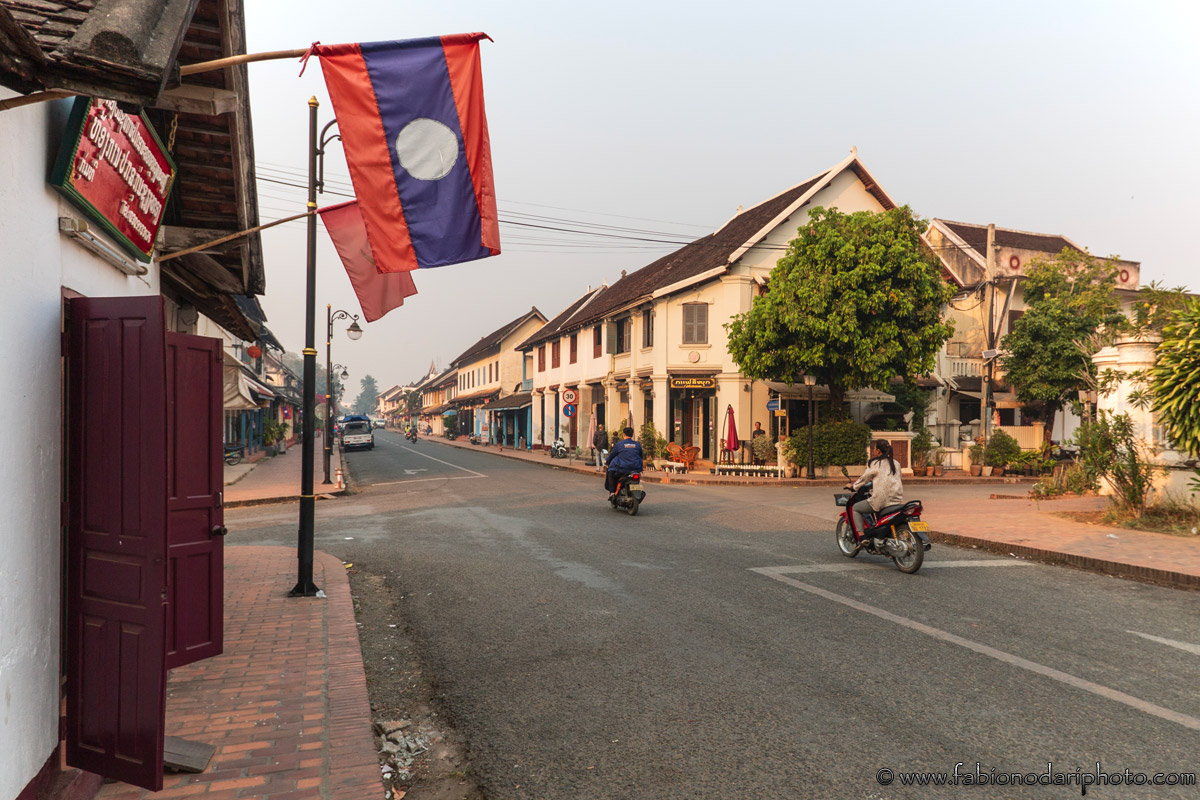
Luang Prabang is one of the two cities in Laos with an airport (the other is Vientiane, the capital). If you are entering Laos on foot from Thailand or China, you can take the new train that connects Vientiane to Boten, passing through Vang Vieng and Luang Prabang (don’t forget to check my travel guide to Vang Vieng).
I don’t recommend getting to Luang Prabang via minibus unless there is no other option available: the roads are pretty bad, and the journey can take several (very uncomfortable) hours.
How to get around Luang Prabang
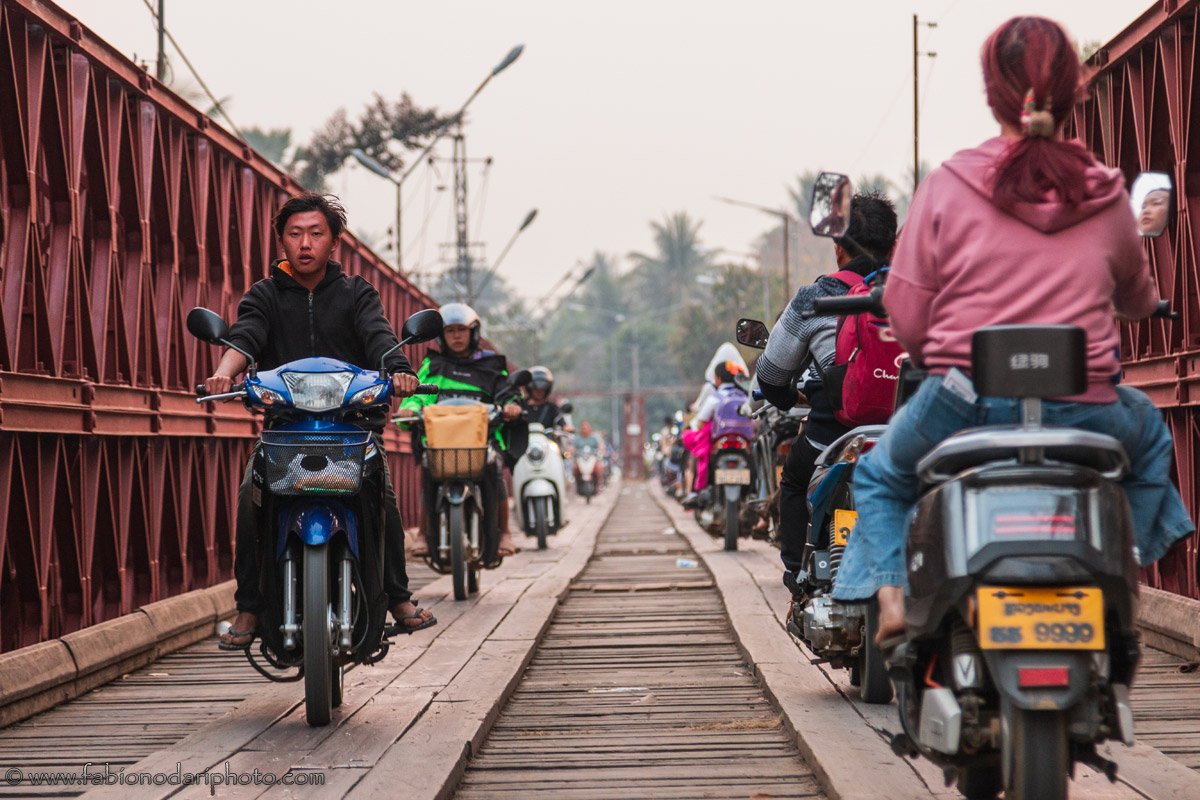
Besides the new train, public transportation is not a thing in Laos, especially inside cities. Taxis are also nonexistent, but to be honest, the historic center of Luang Prabang is relatively small, and if your accommodation is located nearby, you can walk everywhere.
If you want to explore the surrounding area, then your best option would be to rent a scooter. If you can’t do that, you can hire a tuk-tuk driver, but it will be expensive.
If you rent a scooter, my advice is NEVER to leave your passport as a deposit and take several pictures of the scooter when the shop hands you the keys. Scams in Southeast Asia are common, and scamming tourists by making them pay for non-existent damages on the scooter seems to be the most common.
Where to stay in Luang Prabang

Luang Prabang is an excellent destination for people with a limited budget. You can find hostels or guest houses right in the old town. You can check both on Booking.com and also on Trip.com. Remember that you shouldn’t stay too far from the old town due to the lack of public transportation.
I wanted to try something unique and stayed at the Luang Say Residence. Let me put it this way: it’s not a cheap hotel, BUT this property is unique. The Luang Say Residence is an iconic 5-star French colonial resort featuring 32 luxury suites and includes a swimming pool, a library, an 1861 bar, and a fine dining restaurant.
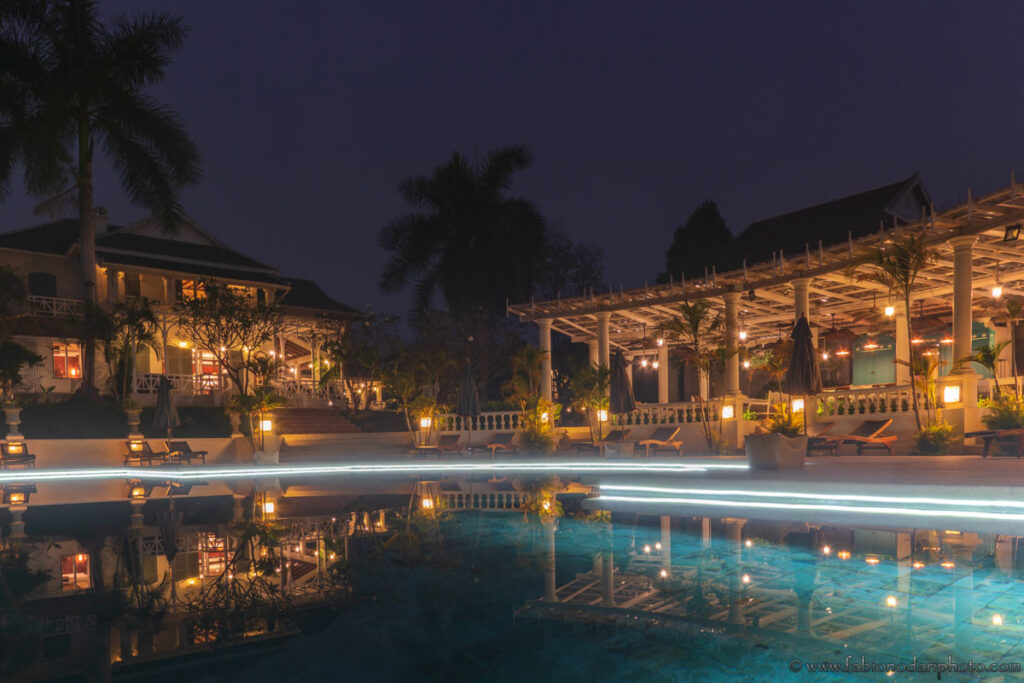
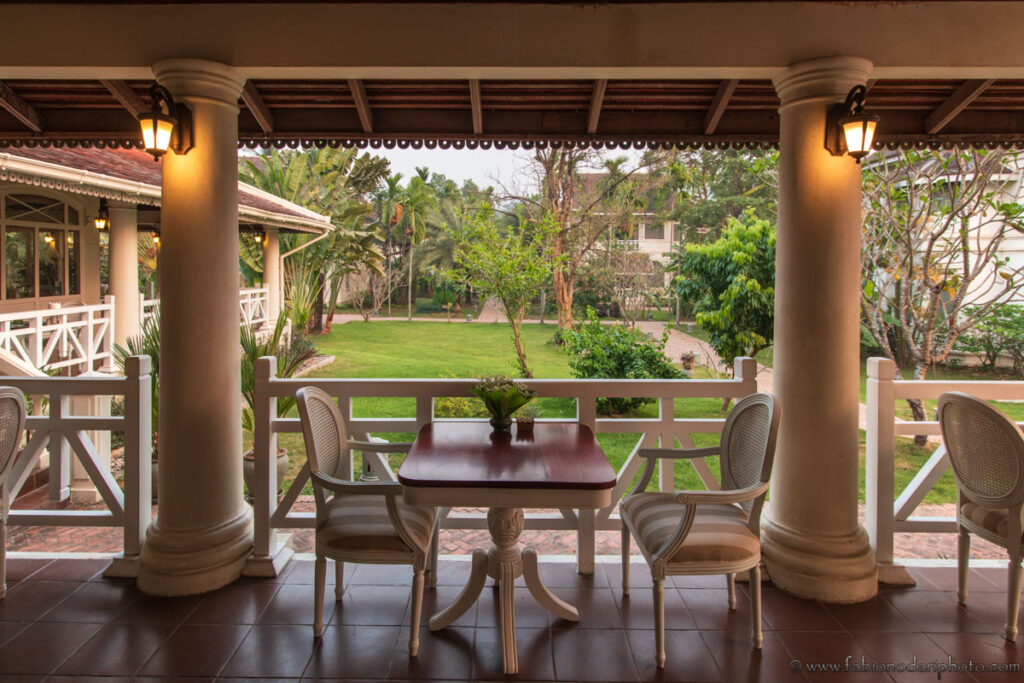
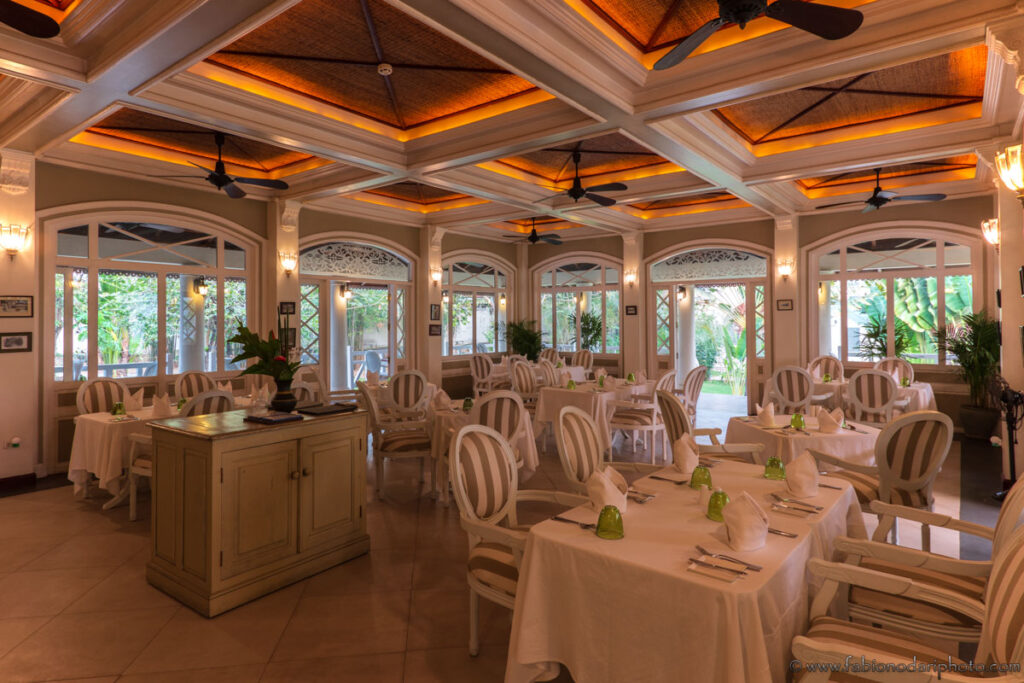
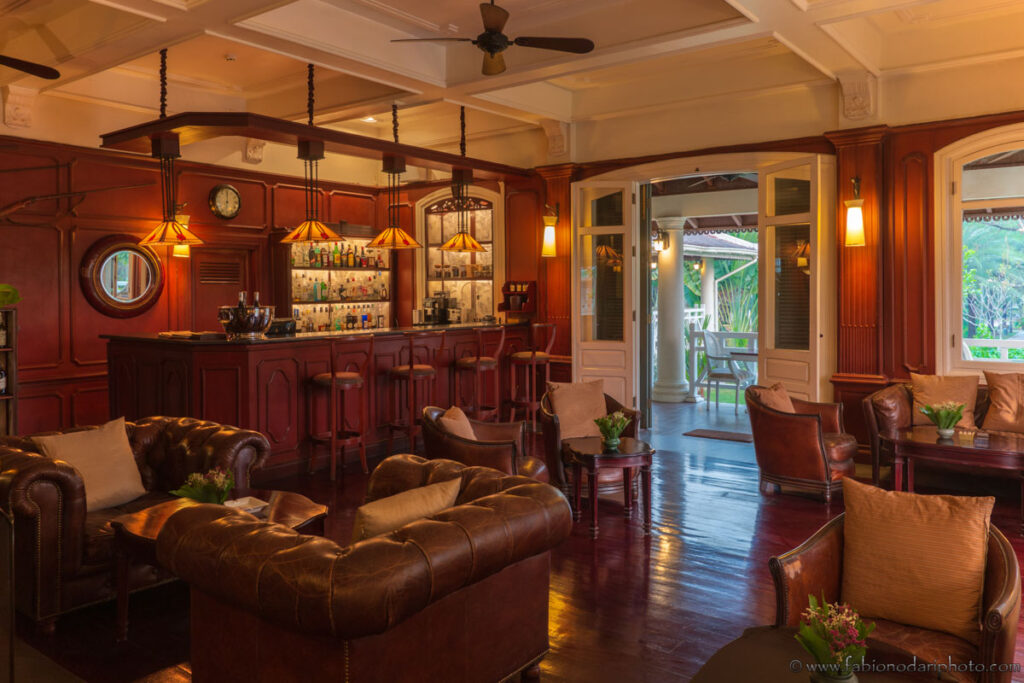
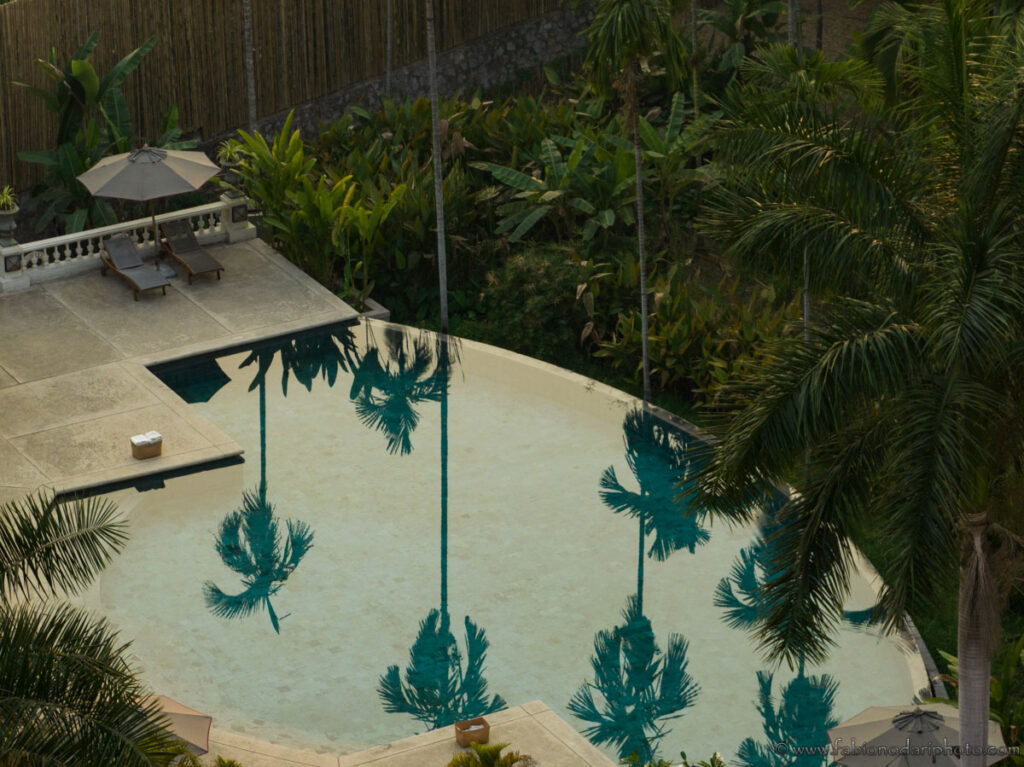
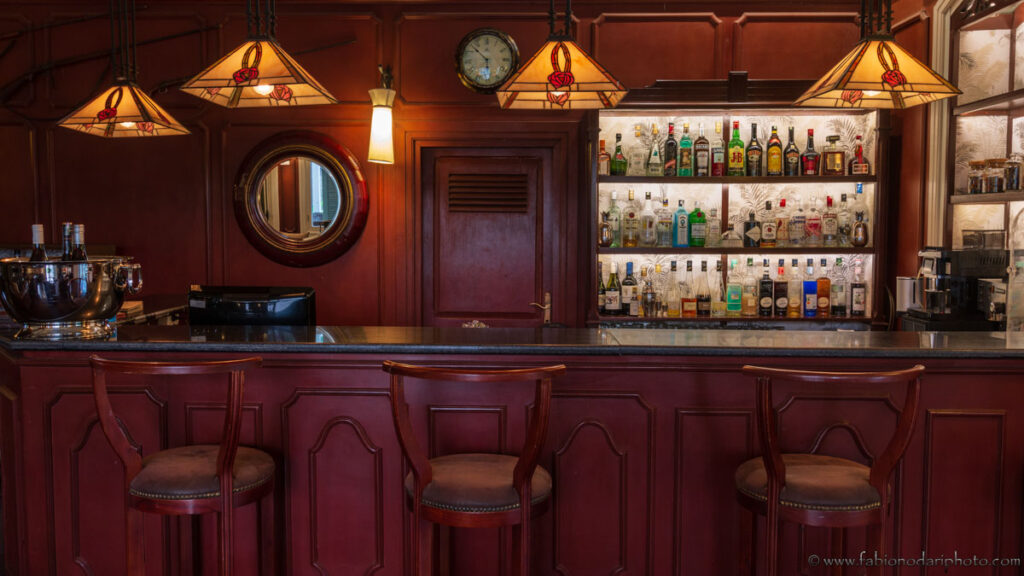
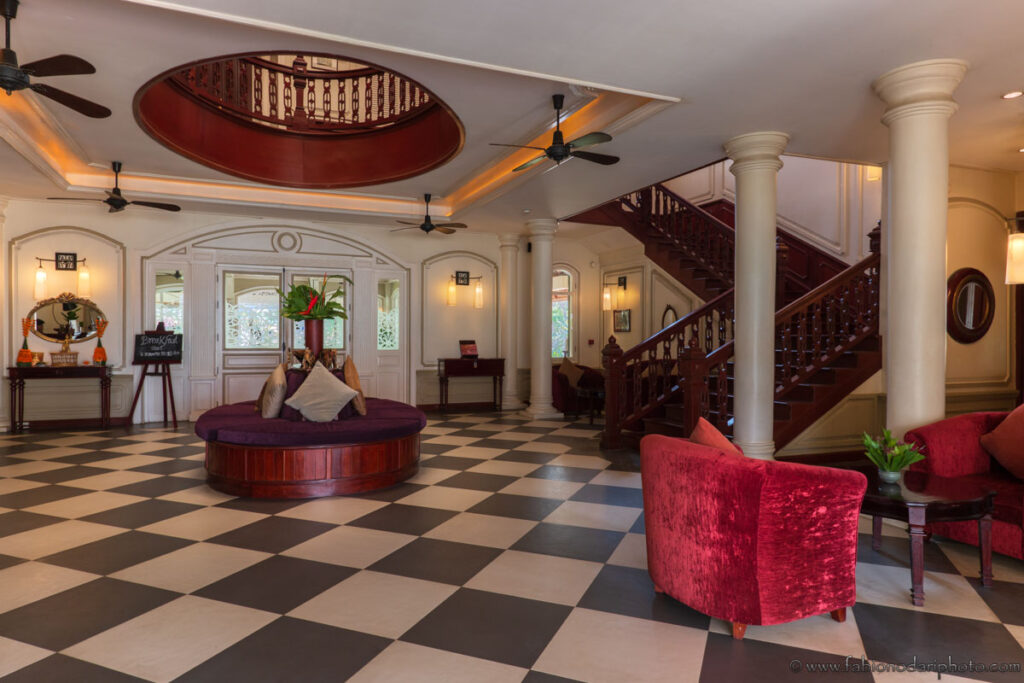
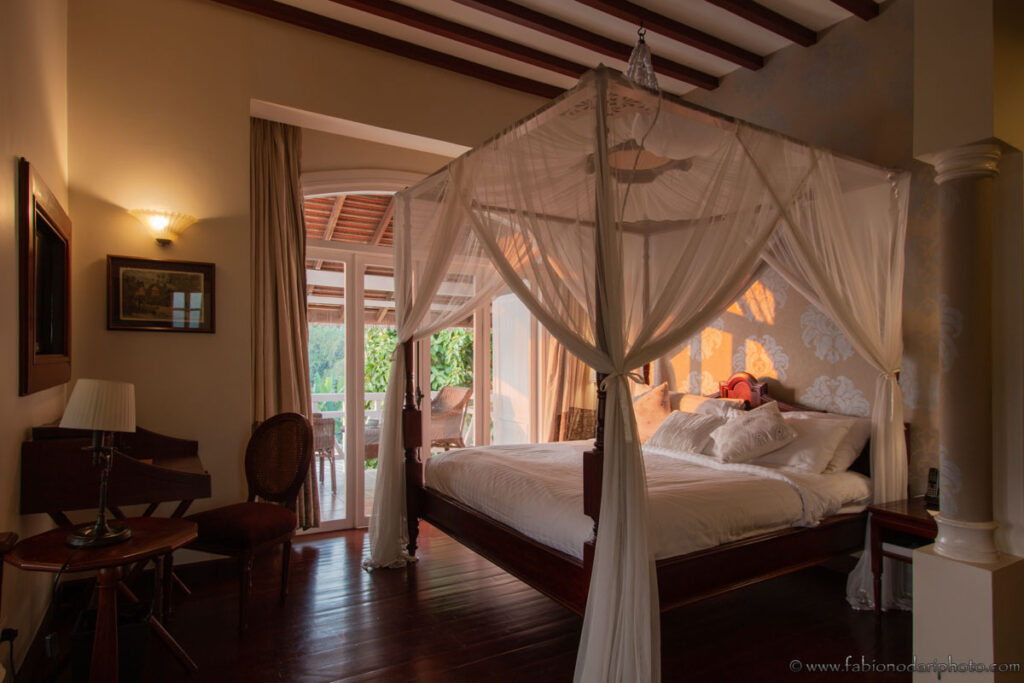
The resort is a bit further away from the old town, but they offer a free shuttle service to and from the city center that runs every hour.
Luang Prabang 2 days itinerary
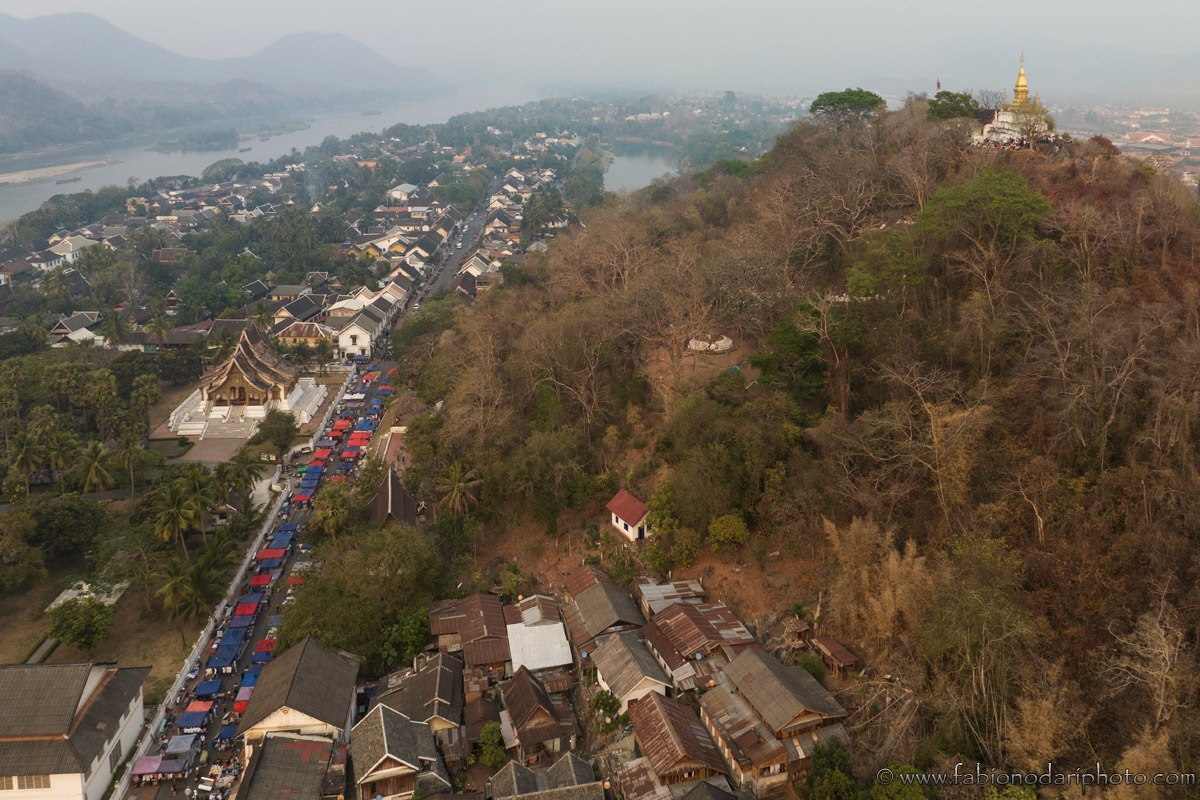
Two days should be enough to explore most of the city, but you can stay longer to relax. Luang Prabang is a great city in southeast Asia to immerse yourself in without the crazy traffic of Bangkok or Hanoi.
Alms-Giving Ceremony
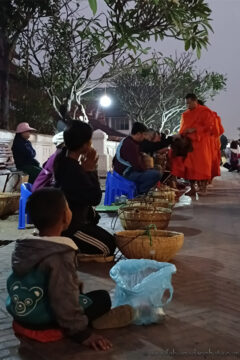
You can start the first day by waking early to see the alms-giving ceremony. Remember that the time might slightly change depending on the season, but it should be around 5:30 in the morning.
I have mixed feelings about this ceremony. On the one hand, it is an ancient and nice tradition involving monks who walk along the city streets, collecting alms (usually food) from the locals.
The truth is that it has become very touristy, with backpackers taking the place of local people and Chinese tourists doing everything that they are not supposed to do to take a few pictures (like getting close to the monks, getting in their way, talking loudly, and so on). But it is what it is. If you are in Luang Prabang, you shouldn’t miss this experience.
Morning Market
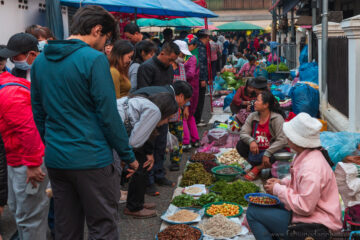
Right after the alms-giving ceremony, you can head to the market in a small alley next to the Royal Palace.
The market attracts many tourists and local people, and it’s better to get there as early as possible.
I like visiting local markets because I can find something I’ve never seen before, even if I’ve spent many years in Asia.
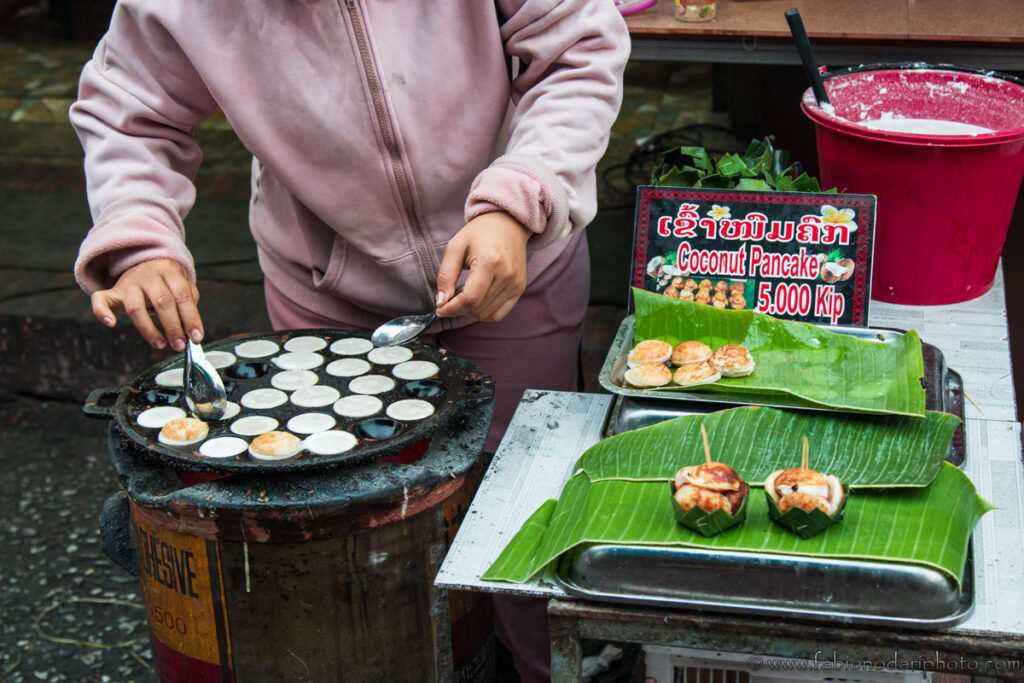
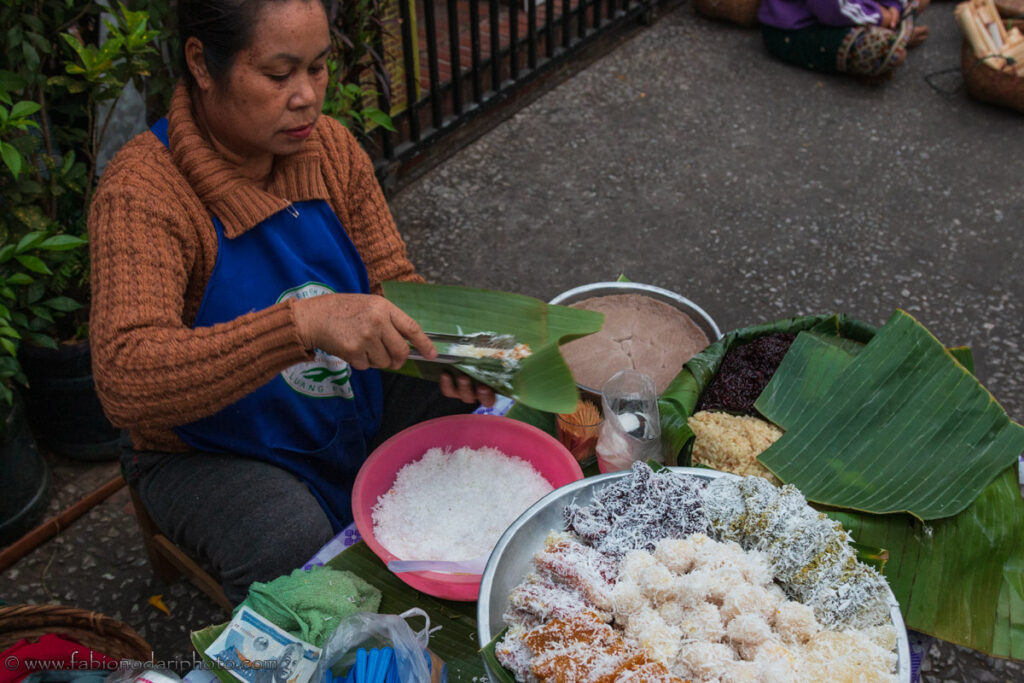
Don’t forget to try the coconut mini-pancakes. They are cheap and delicious.
Discover the temples in Luang Prabang
With over 30 temples scattered around the old town, you’ll have plenty to explore on your first day in Luang Prabang. You’ll have to pay a small fee to access some of these temples.
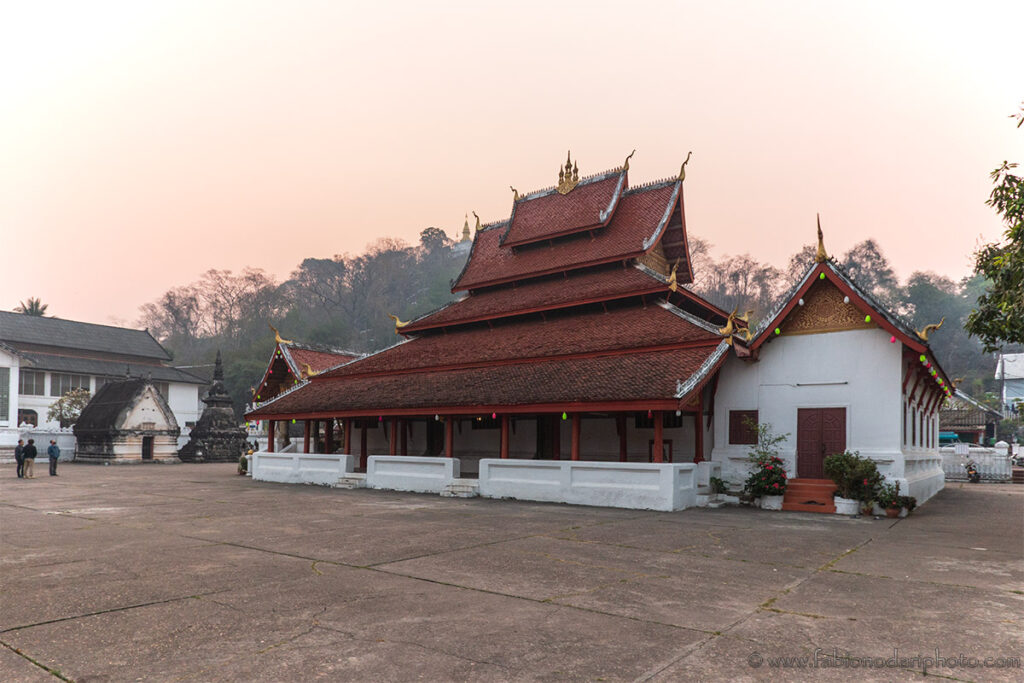
Wat Mai Suwannaphumaham, also called Wat Mai or Wat May, is a Buddhist temple built at the turn of the 18th century. It is the largest temple in Luang Prabang.
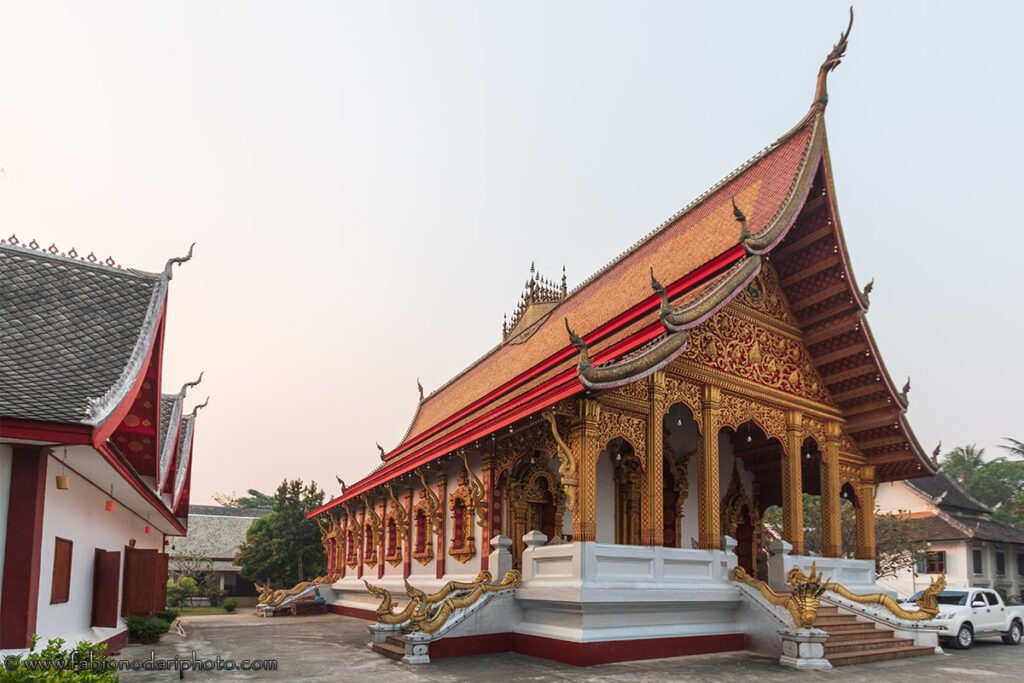
In style inspired by another Wat in Vientiane, the temple has one of the most beautiful coloured roofs in the Thai style, the same as that of Wat Sene.
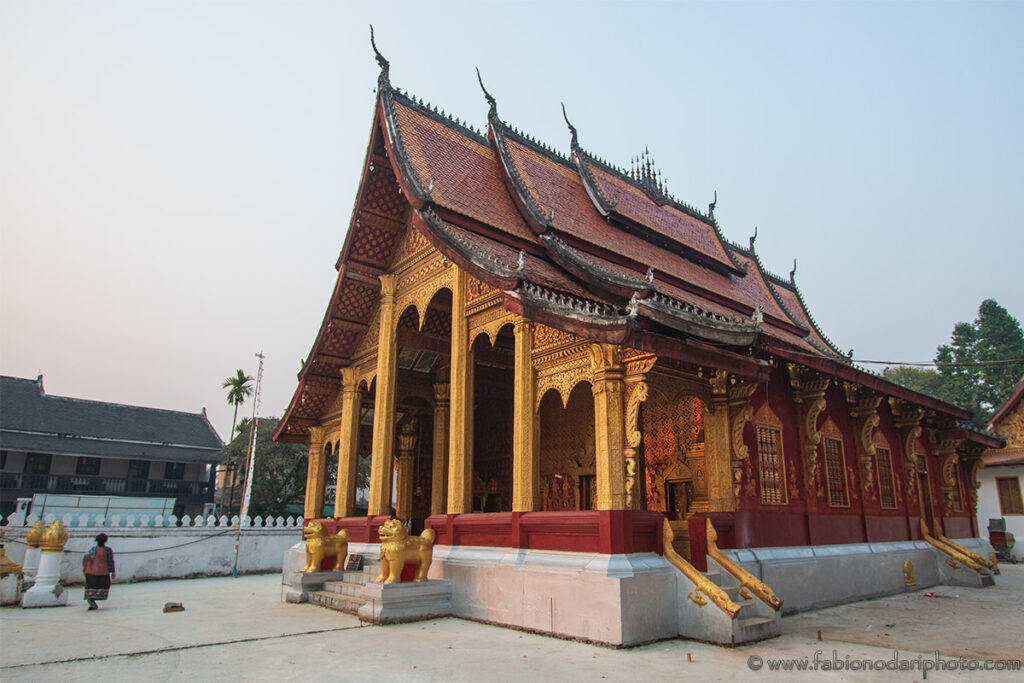
It was built in 1718 by King Kitsarath with (allegedly) 100.000 stones from the Mekong River.
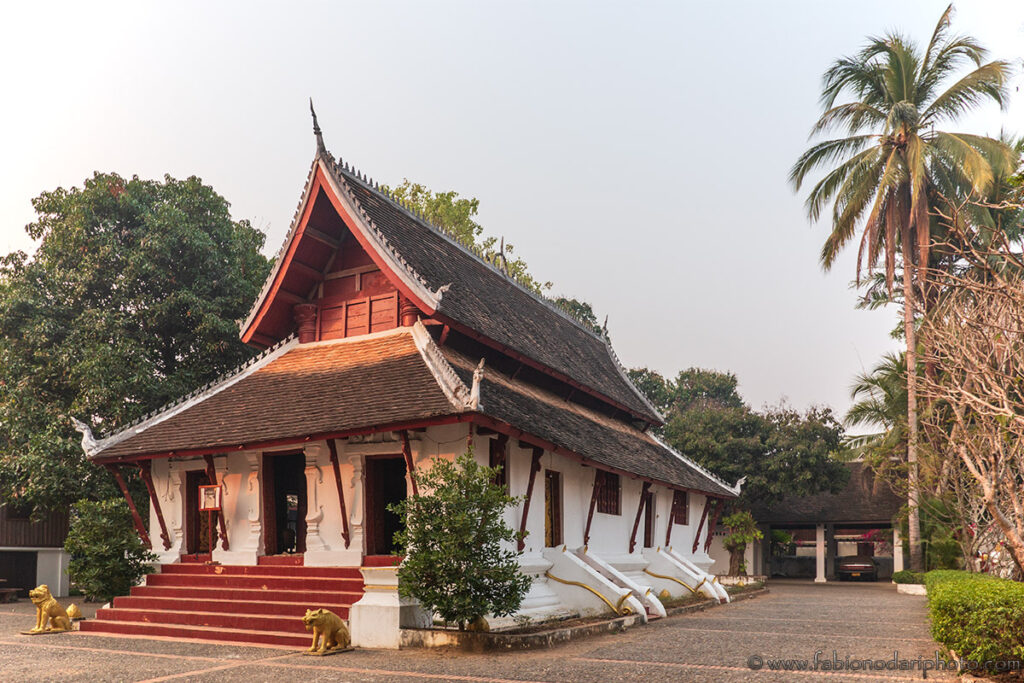
This is another small temple located in the old town and is quite lovely. It’s worth stopping by to take a few pictures.
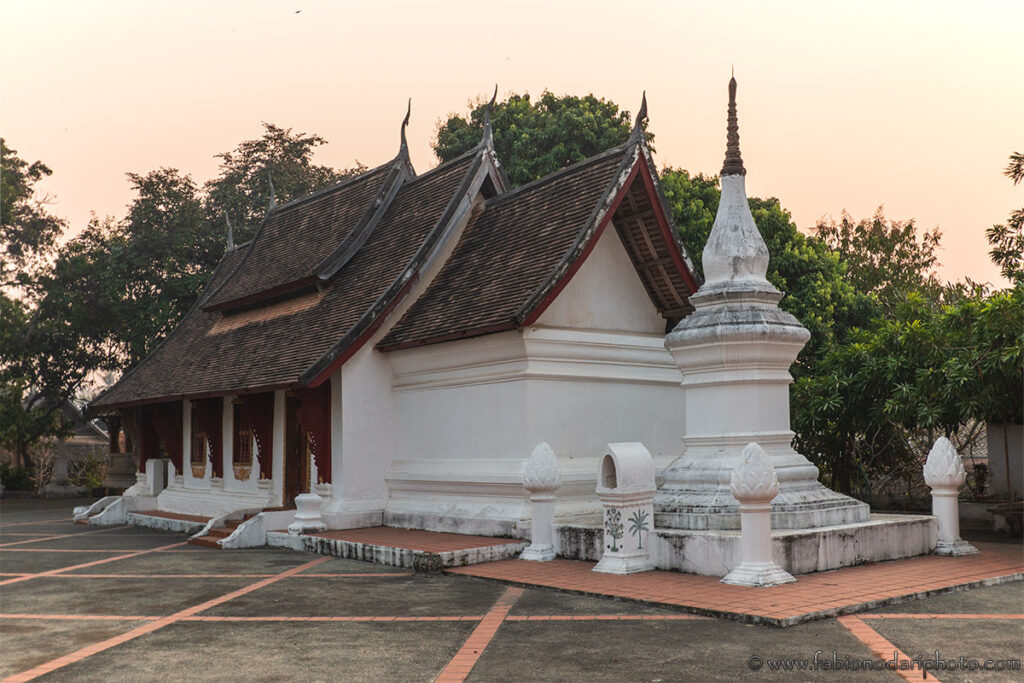
Renovated in 2006 after being partially destroyed by a fire, it’s one of the newest temples. It’s mainly made up of a large colonial building.
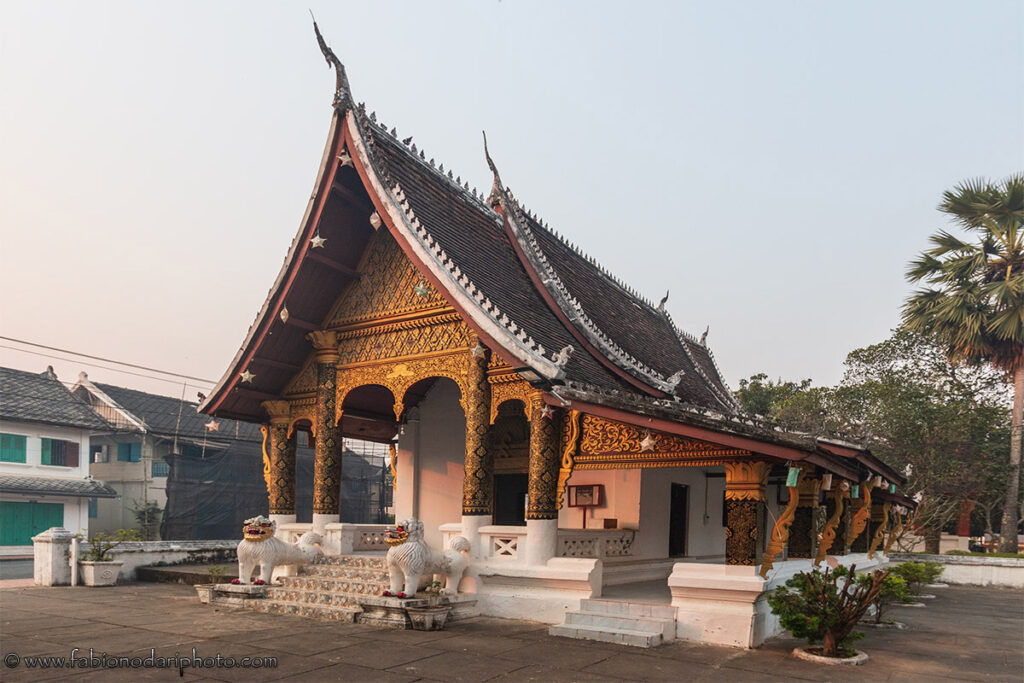
Built in 1763 during the reign of Chao Jotika, Wat Syrimoungkoun Xaiyaram is located near the more famous Wat Xieng Thong.
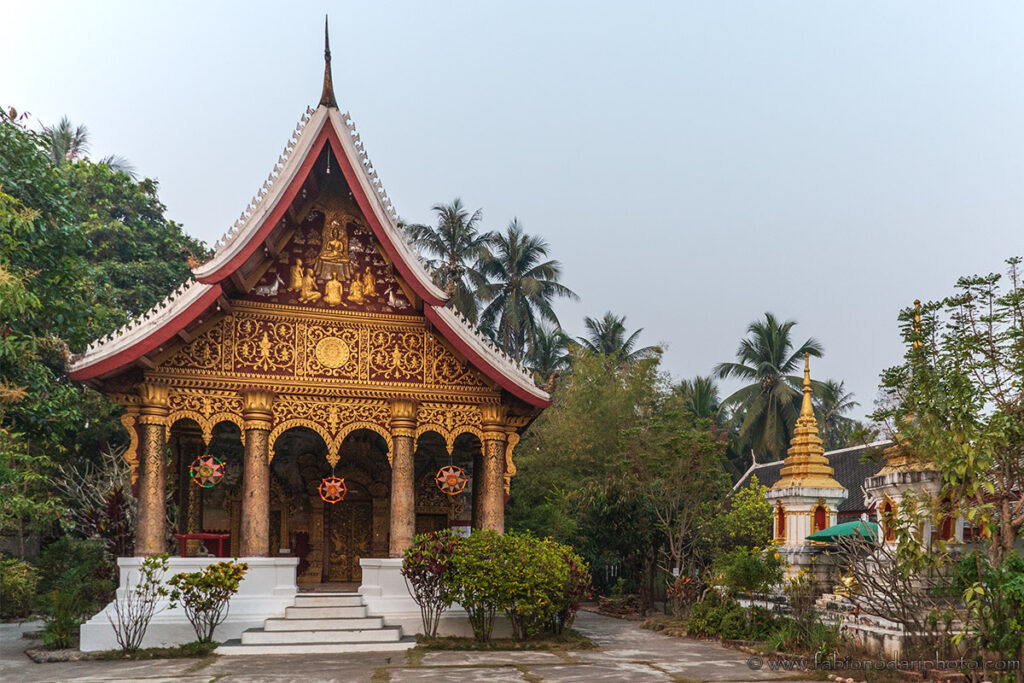
It won’t take much time to visit this tiny temple, but it’s quite photogenic, thanks to its lush vegetation.
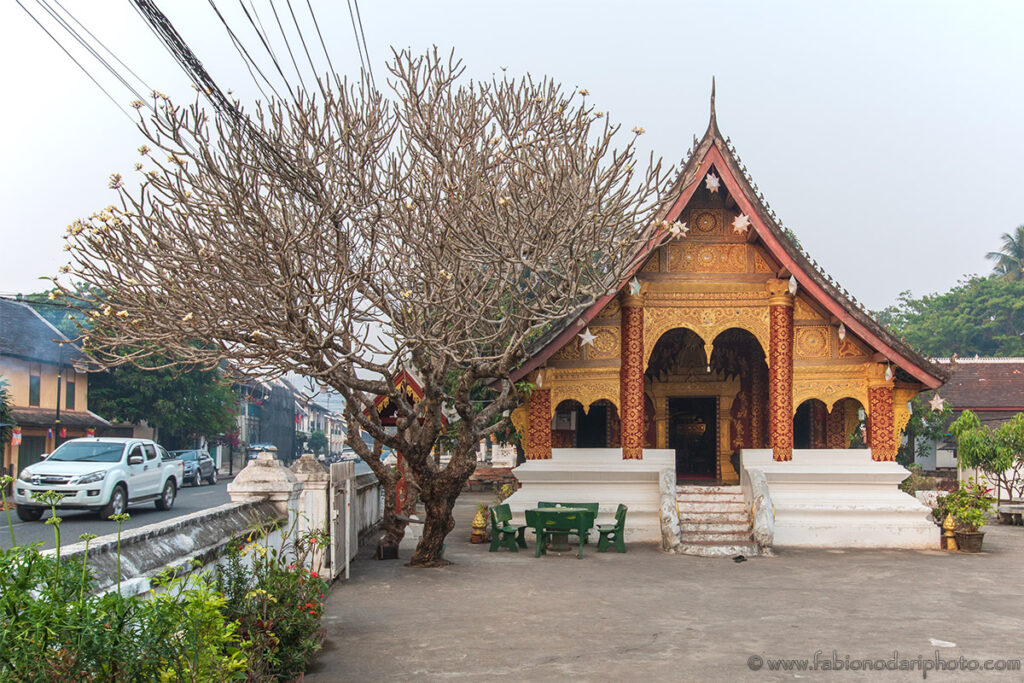
Another lovely temple, Wat Sibounheuang, covers a mysterious ‘hole’ traditionally associated with ghosts.
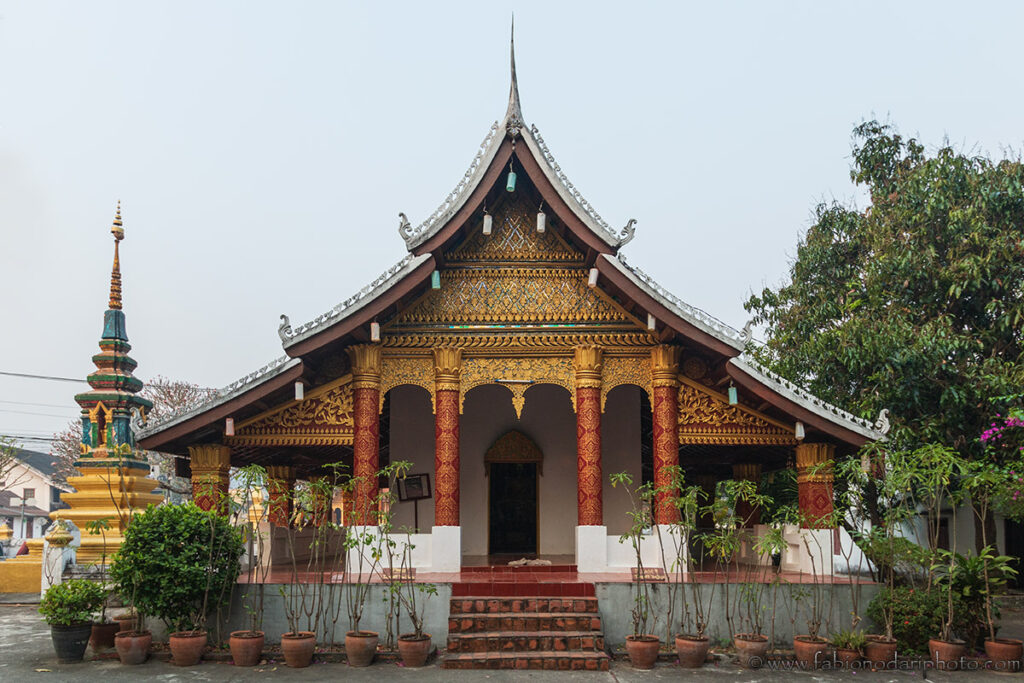
I couldn’t find much info about this temple. It looked half abandoned when I visited it.
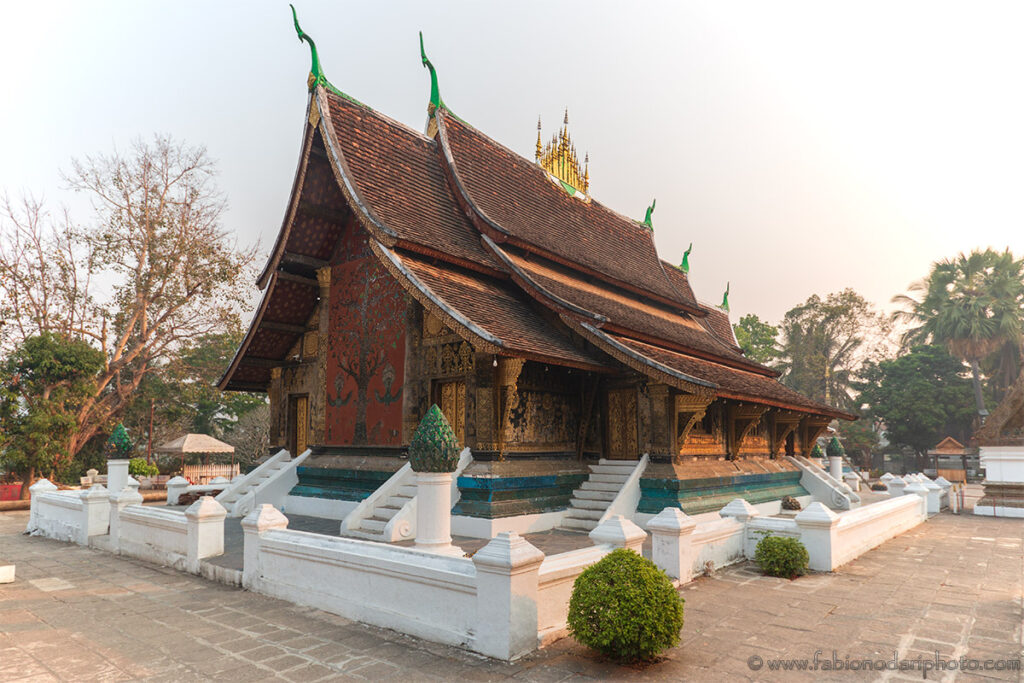
Built between 1559 and 1560 by King Setthathirath, Wat Xieng Thong is one of the most important ones in Laos.
After visiting many temples, you might want to rest in your hotel or one of the many coffee shops along the Mekong River. Avoiding the hottest time of the day is also a good idea.
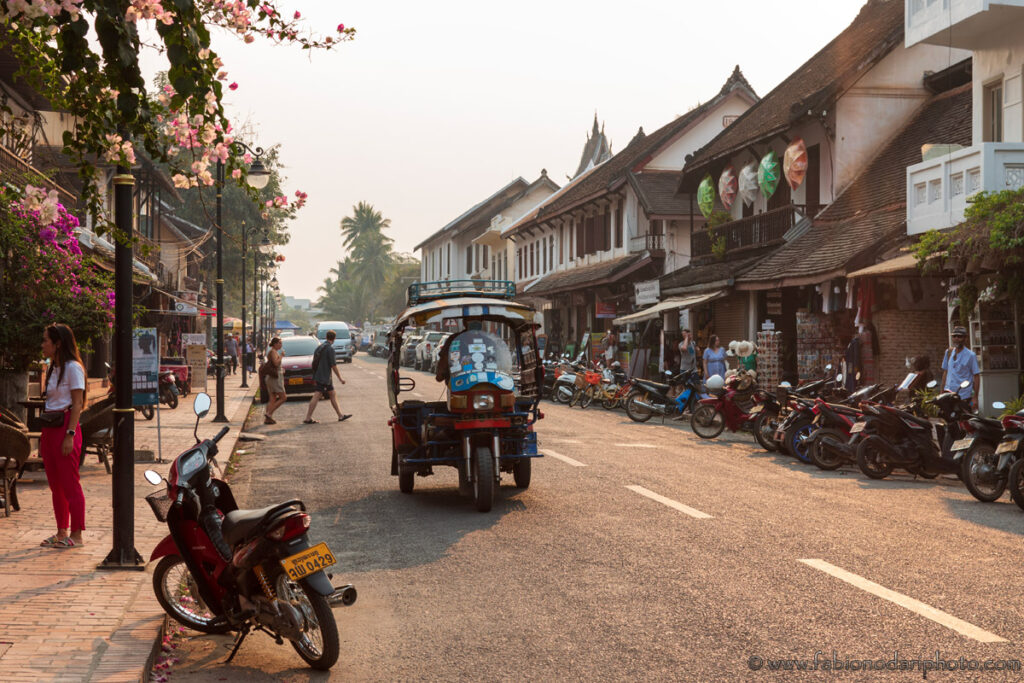
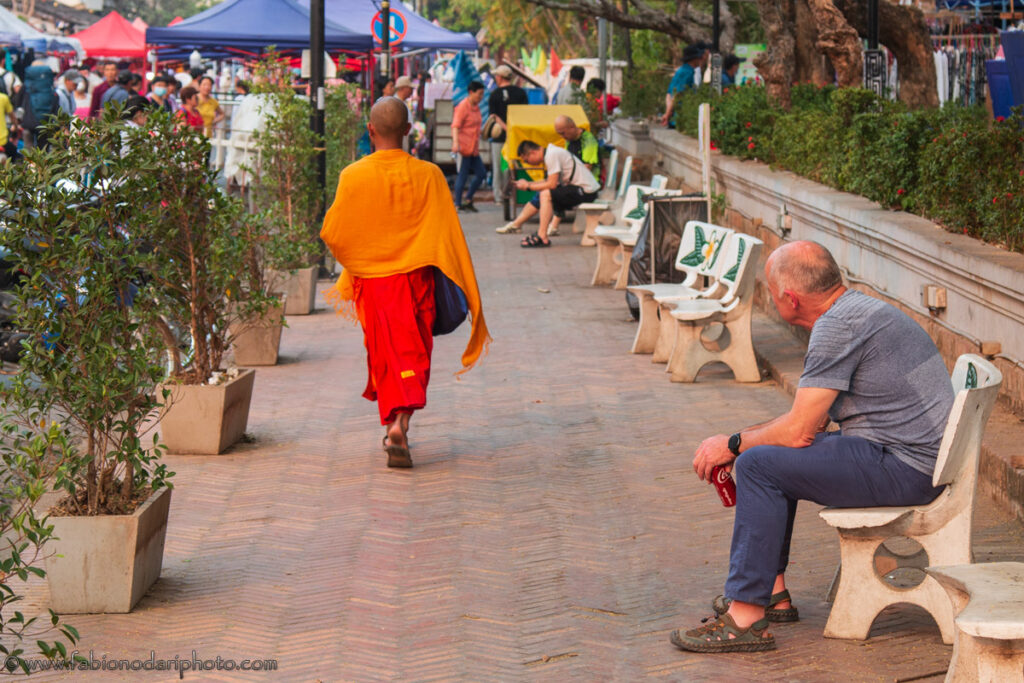
When the temperatures cool down a bit, you might want to keep exploring some of the back alleys of Luang Prabang and then slowly head to Phousi Hill.
Hike Phousi Hill or Mount Phu Si
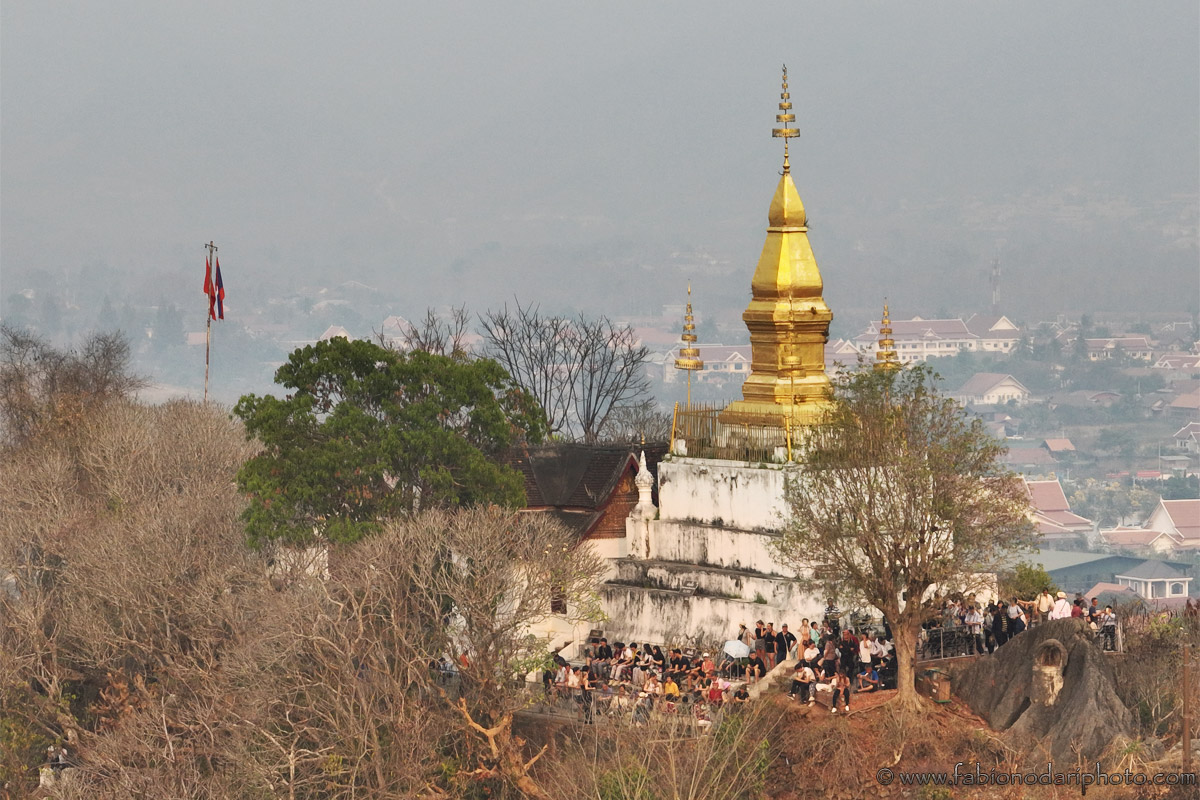
As you arrive in Luang Prabang, you’ll see Mount Phu Si standing tall and overlooking the old town. It rises 100m from the peninsula where the Mekong and Nam Khan rivers converge. Considered the city’s heart spiritually and geographically, this UNESCO-protected site is steeped in ancient legend. It is said that a powerful aga, a deity in Buddhist and Hindu belief with a part-human, part-serpent form, was once called the mountain home.
At the peak of Mount Phousi, you can enjoy a panoramic 360-degree view of Luang Prabang and the tranquil valley below. Also, you’ll have to pay a small fee in this case.
Luang Prabang Night Market
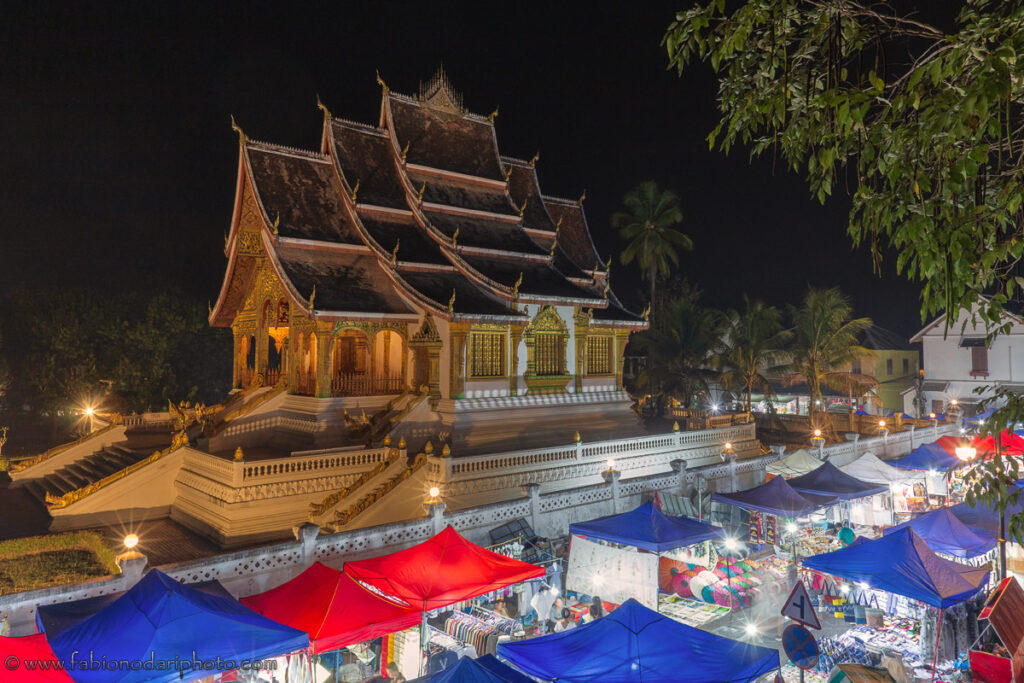
As soon as the sun sets, local people head to Sisavangvong Road with their carts. The night market attracts many tourists: you’ll find local food and products. Don’t forget to bargain!
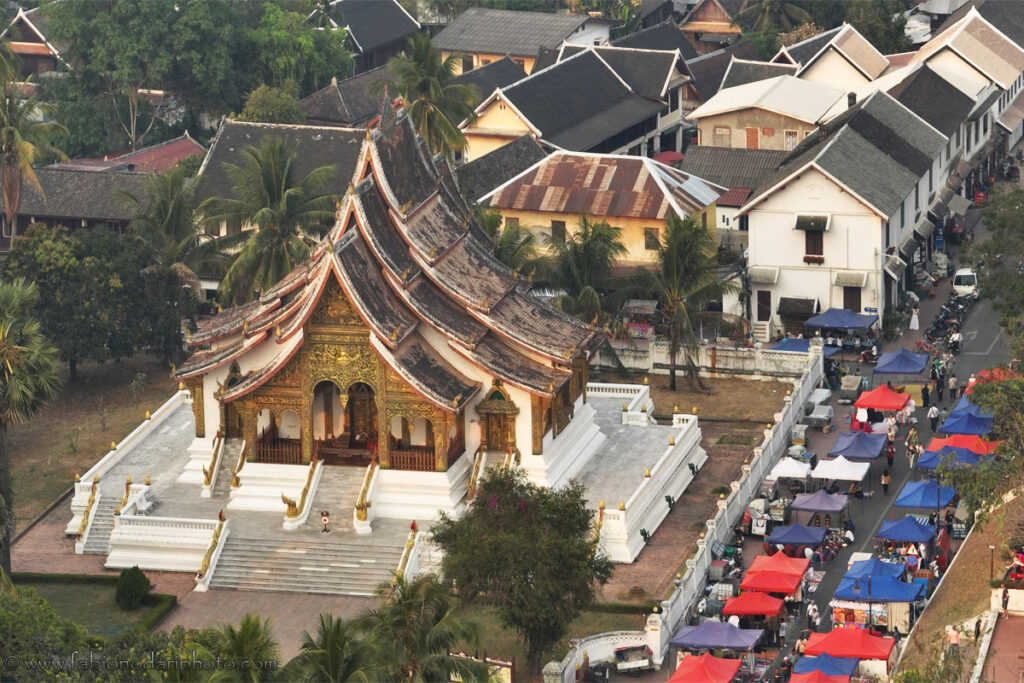
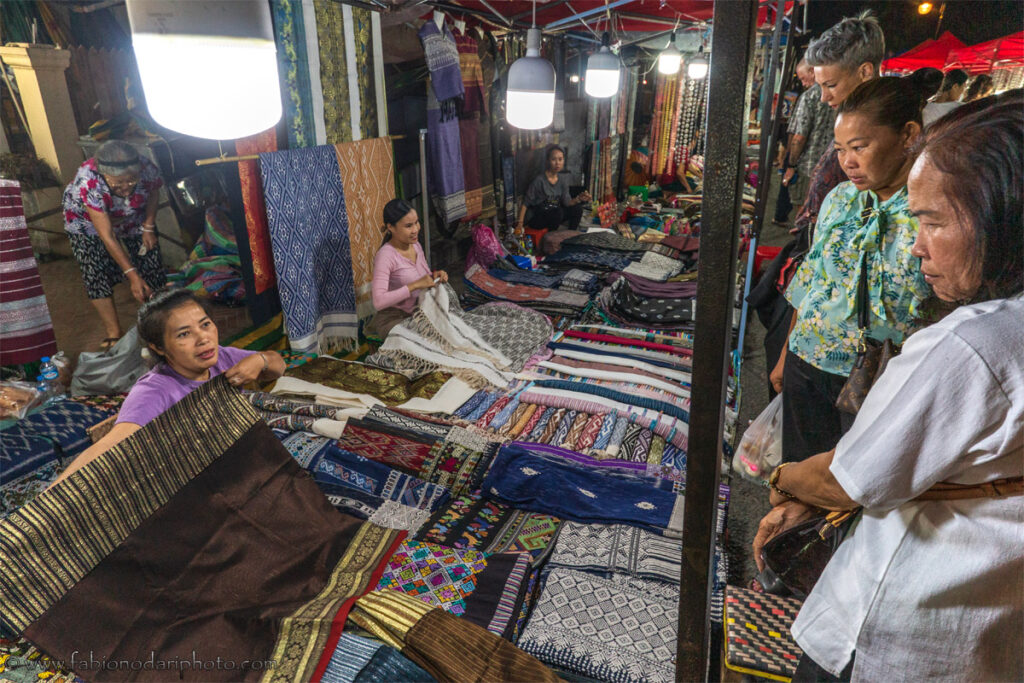
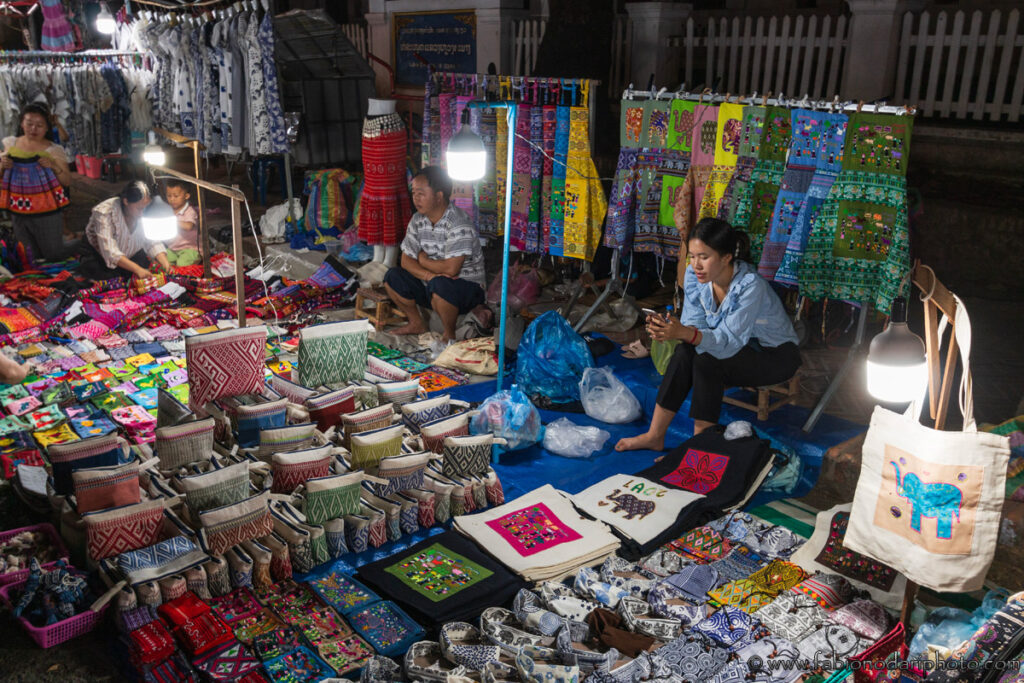
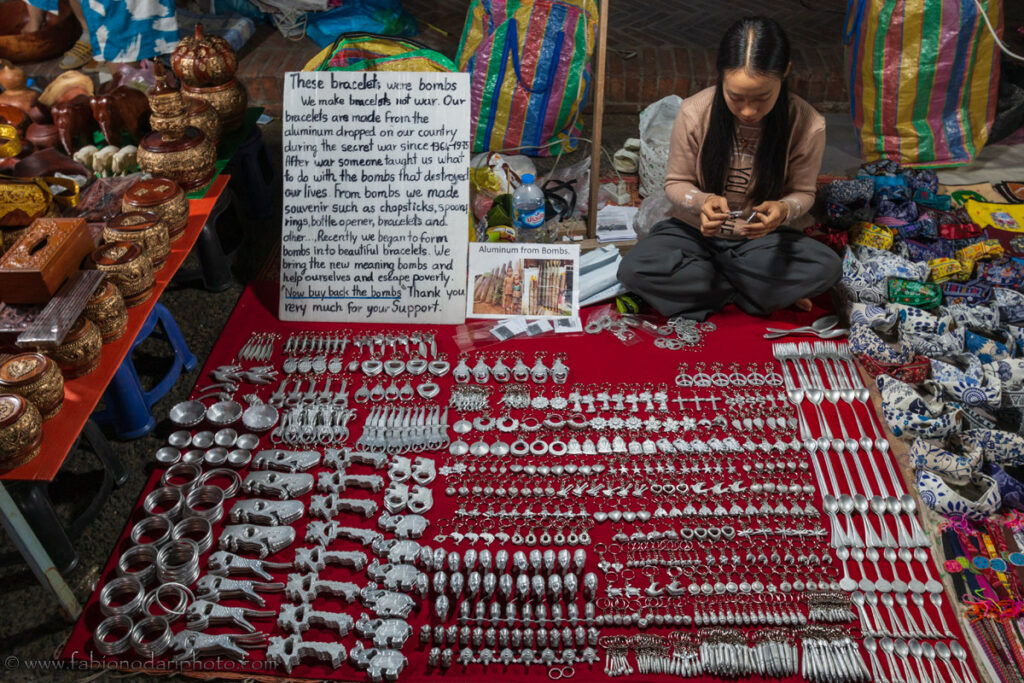
On the first section of the road is where you’ll find all the stalls selling street food.
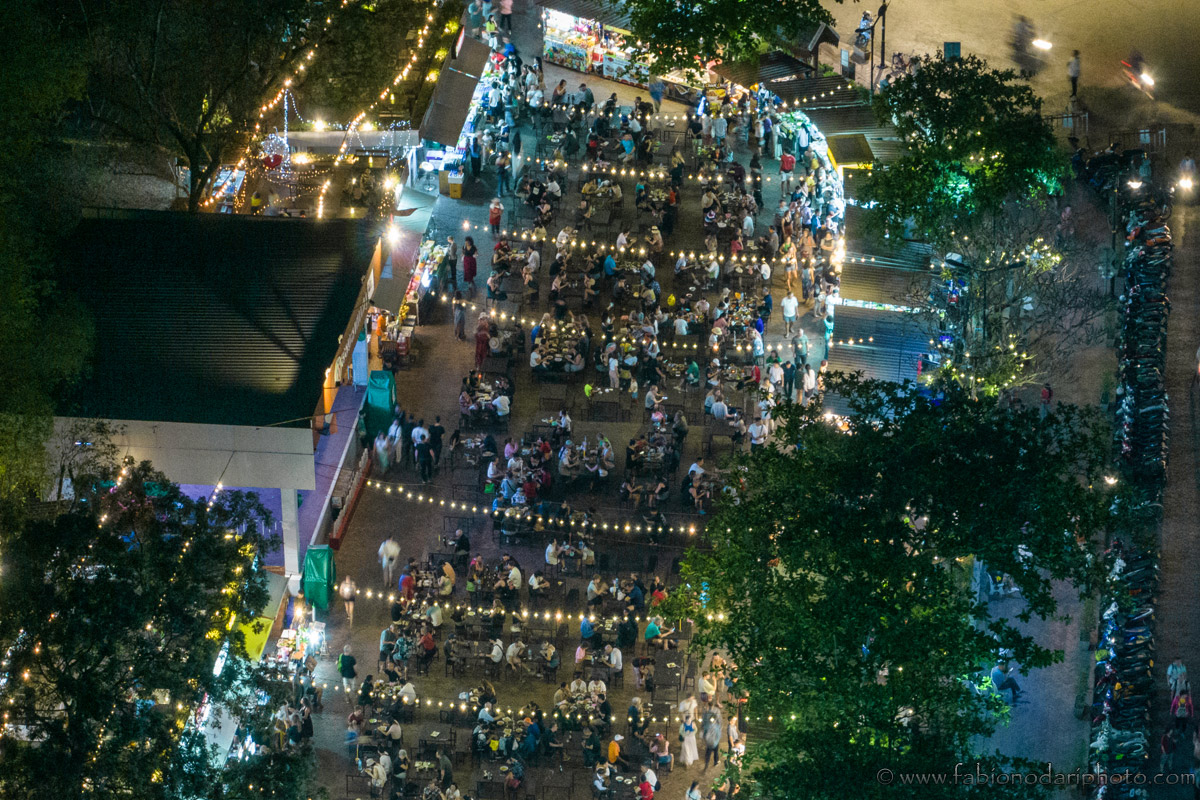
If you feel tired, you can head to one of the many massage centers along the main road. They are very cheap, especially if you have never been to Asia. You can expect to pay 5$ for a 1-hour massage.
Kuang Si Waterfall
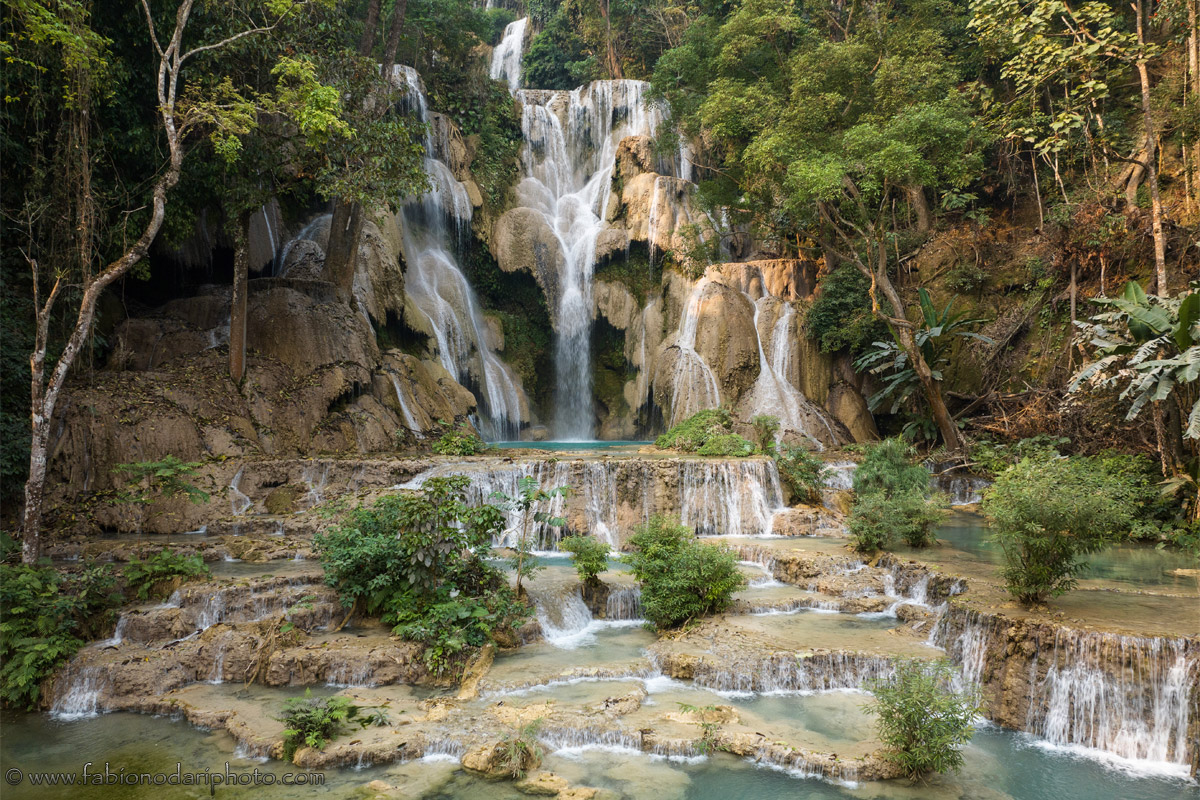
You can start the second day by visiting the Kuang Si Waterfall. The best way to do it is by renting a scooter the day before so that you can start driving around 7:00 am and arrive at the waterfall around 8:00 am, right when the park opens and there are no people.
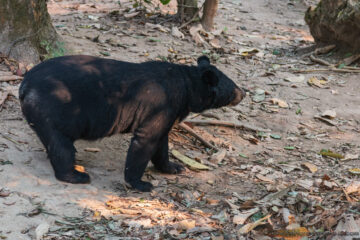
Inside the waterfall park, you can visit the Tat Kuang Si Bear Rescue Centre, which is dedicated to saving moon bears. More than 100 bears have been rescued in Laos. There are six bear houses at the new sanctuary, and they are planning (and fundraising) for more in preparation for additional rescues, growing cubs, and bile farm closures.
It’s great to see that people worldwide are raising awareness about saving endangered wildlife, even in poorer countries where this is usually more difficult.
You can visit the Pha Tad Ke Botanical Garden on the way back to Luang Prabang.
Explore the countryside and join one of the many day or half-day tours
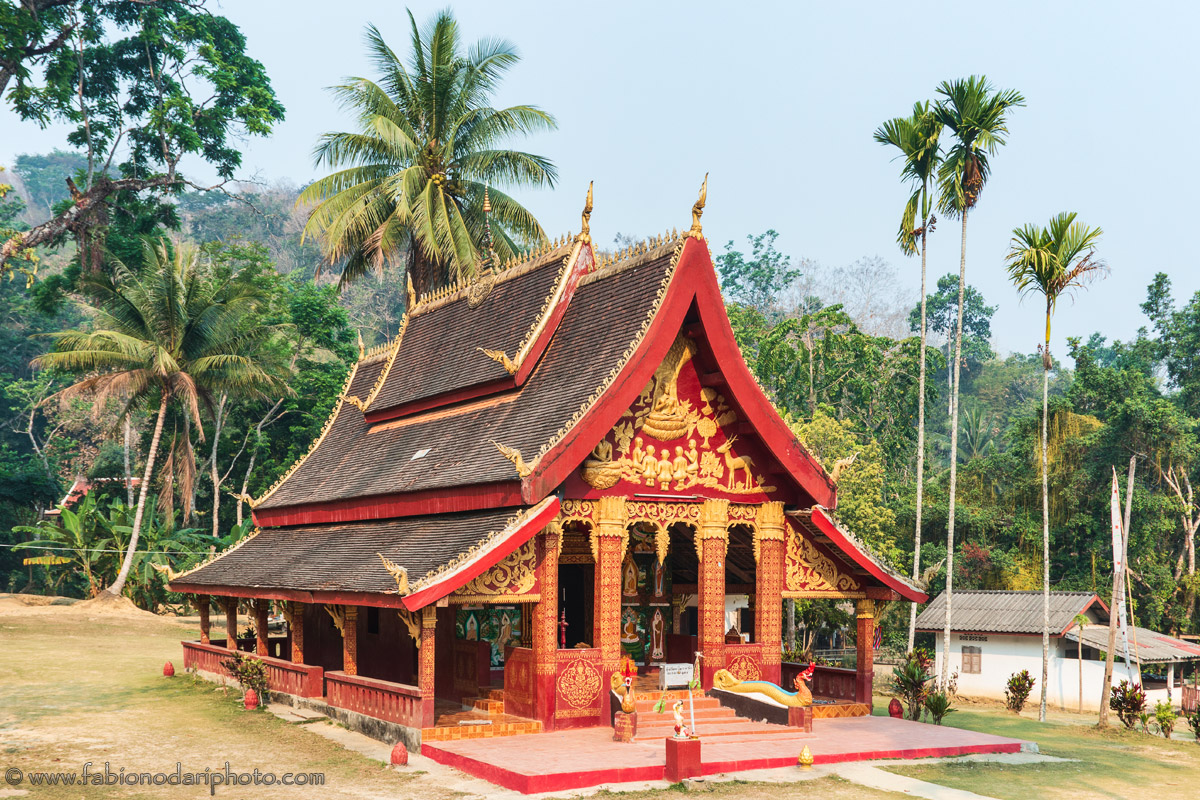
You can spend part of the second day driving around the countryside and exploring some of the villages to get interesting pictures and a glimpse of local people’s lives. For example, I encountered this beautiful temple on my way to the waterfall.
One of the most common day or half-day tours you can join is to one of the elephant rescue centers. These tours are easy to book because you’ll see the agencies advertising them along the main road in Luang Prabang.
Usually, riding elephants is not allowed, and they are supposed to respect these beautiful animals. I didn’t have time to join a tour, so I don’t have any personal feedback, but it should be an exciting experience.
Finally, book a cruise along the Mekong River at sunset.
Luang Prabang is also the starting point to reach a small village that is becoming increasingly popular: Nong Khiaw. Check out my travel guide to see if going there is worth it.
Final considerations
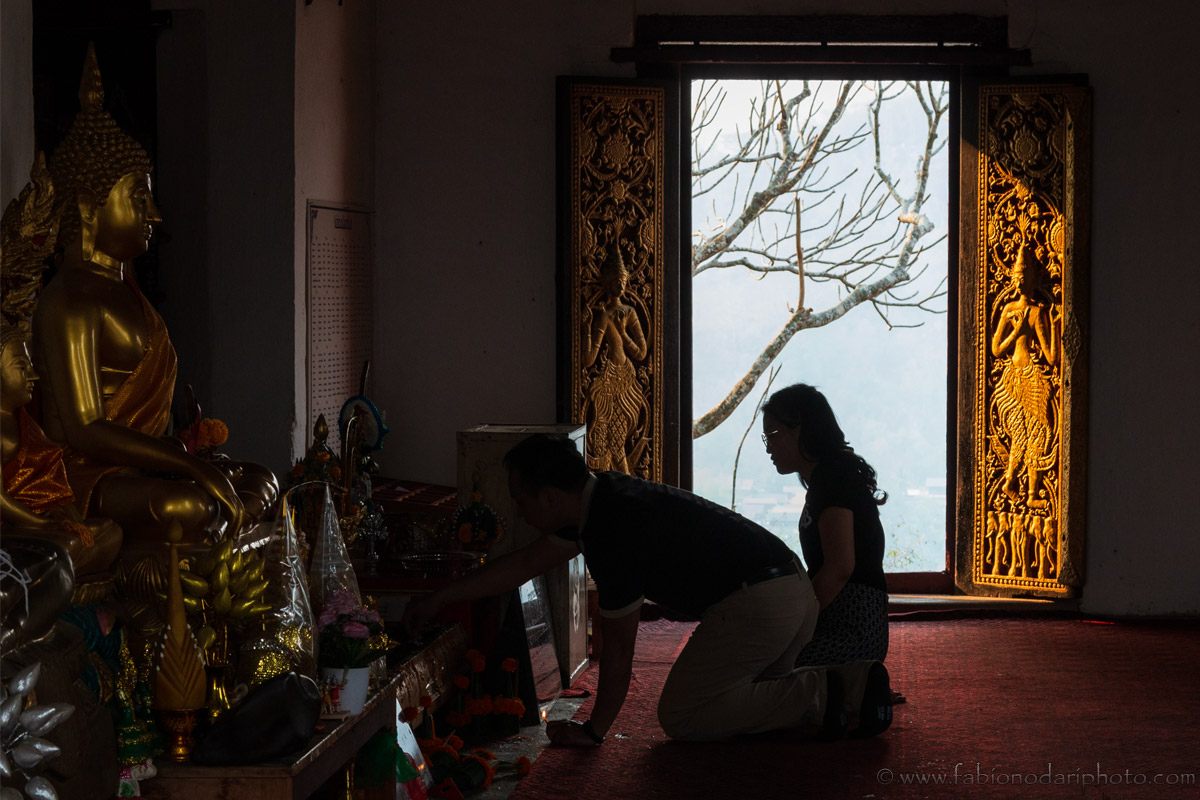
Thanks to its laidback vibe and beautiful architecture, Luang Prabang has quickly become one of my favorite Southeast Asian cities. You will not see highrise buildings, and the traffic is not bad because there aren’t many cars. The view of the Mekong River at sunset is fantastic, and I’m sure you’ll want to spend a few more days just chilling out in one of the many coffee shops scattered along the roads of the historic district.
